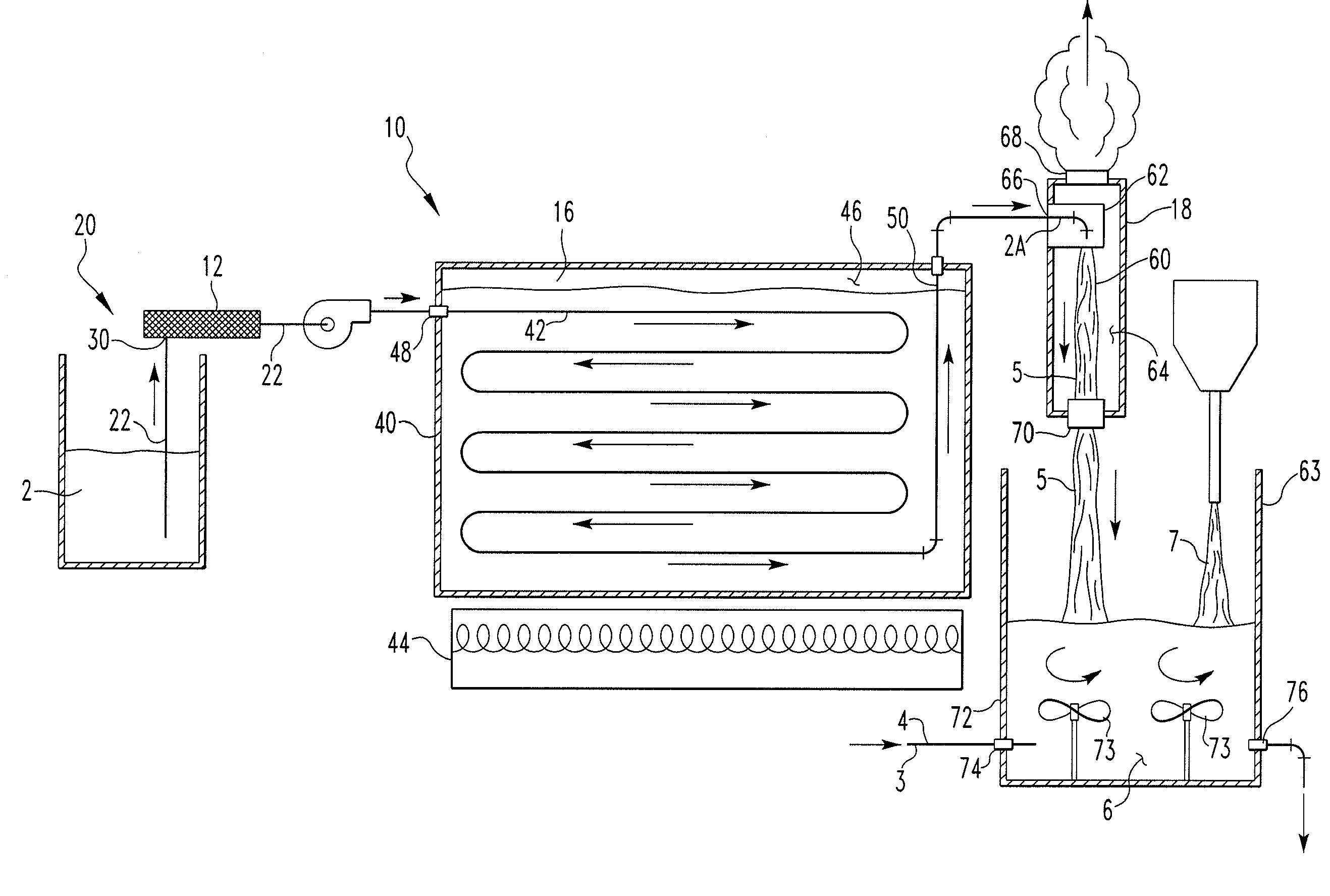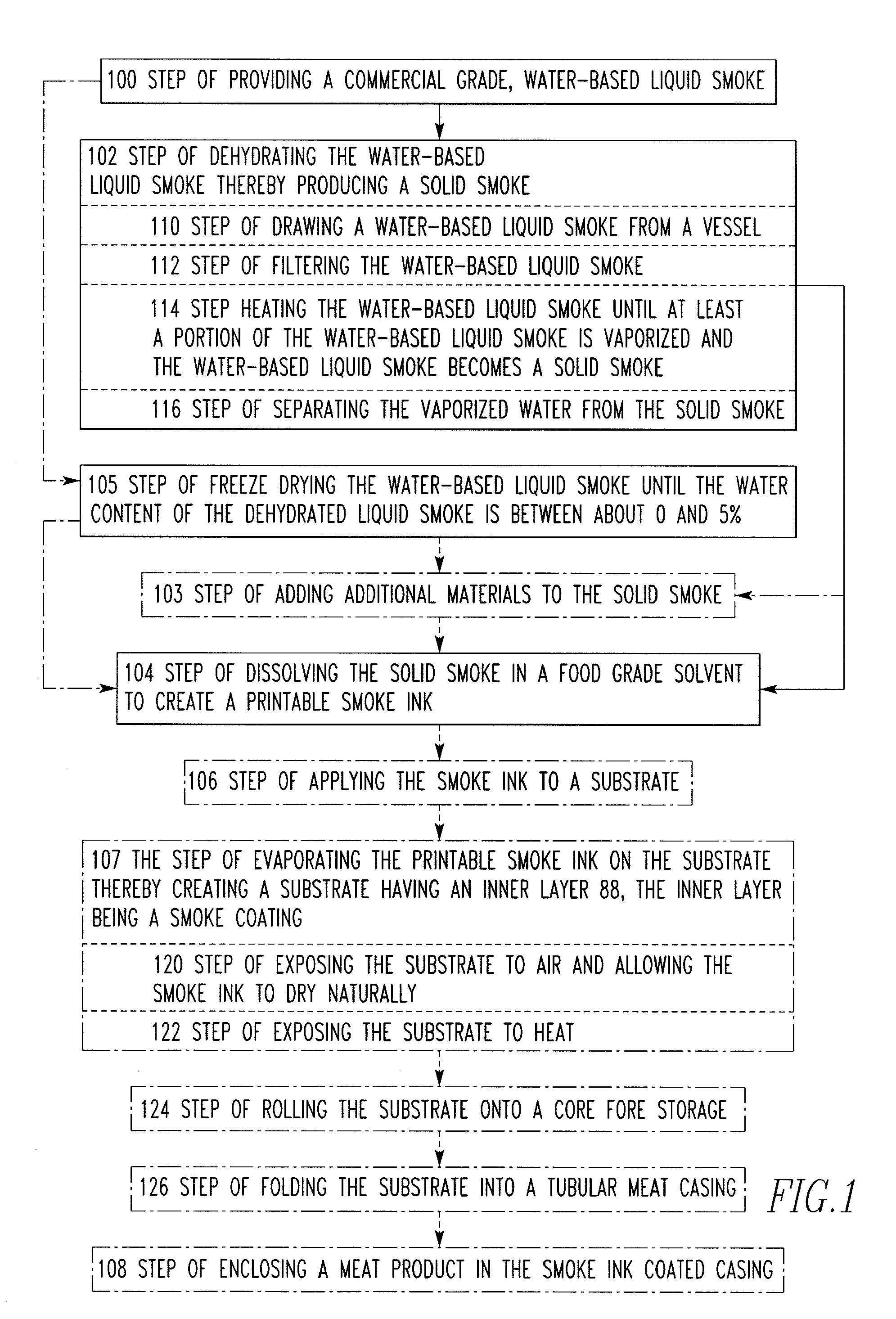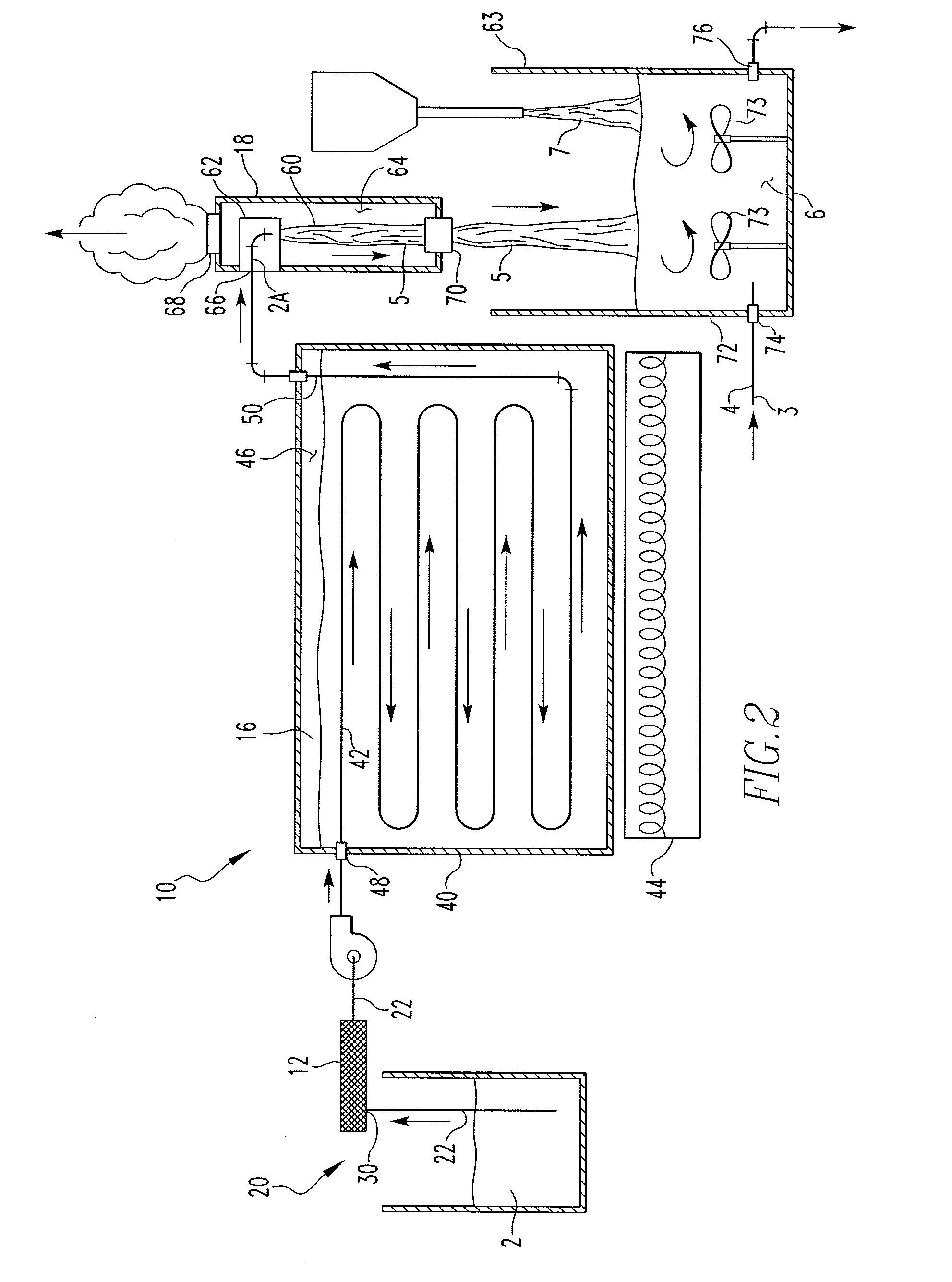Smoke ink and method of manufacture
a smoke ink and smoke technology, applied in the field of smoke ink and manufacture method, can solve the problems of uneven flavor and appearance of the final meat product, difficult application to the casing, and reticulation of liquid smoke on the casing surface, etc., to achieve the effect of enhancing color, flavor, and adhesion to the mea
- Summary
- Abstract
- Description
- Claims
- Application Information
AI Technical Summary
Benefits of technology
Problems solved by technology
Method used
Image
Examples
Embodiment Construction
[0013]As used herein, a “food grade solvent” includes, but is not limited to, a food grade alcohol, a food grade ester or a food grade mixture thereof.
[0014]As used herein, in reference to the substrate 80 discussed below, a “material layer” means a solid layer of a film or fabric or similar construct. Layers of other substances, or non-fabric-like constructs, such as smoke ink, may be applied to the “material layers” of the substrate but are identified only as “layers” as opposed to “material layers.”
[0015]As used herein, “solid smoke” includes “smoke paste,”“smoke soap,” and “smoke crack.” That is, “solid smoke” includes semi-solids such as, but not limited to, paste. Similarly, the word “solids” when referring to dehydrated liquid smoke, also includes semi-solids.
[0016]As used herein, “smoke paste” is a water-based liquid smoke that has been dehydrated so that water constitutes between about 0% and 5%, and more preferably about 1.4% of the material by weight. “Smoke paste” is sof...
PUM
 Login to View More
Login to View More Abstract
Description
Claims
Application Information
 Login to View More
Login to View More - R&D
- Intellectual Property
- Life Sciences
- Materials
- Tech Scout
- Unparalleled Data Quality
- Higher Quality Content
- 60% Fewer Hallucinations
Browse by: Latest US Patents, China's latest patents, Technical Efficacy Thesaurus, Application Domain, Technology Topic, Popular Technical Reports.
© 2025 PatSnap. All rights reserved.Legal|Privacy policy|Modern Slavery Act Transparency Statement|Sitemap|About US| Contact US: help@patsnap.com



